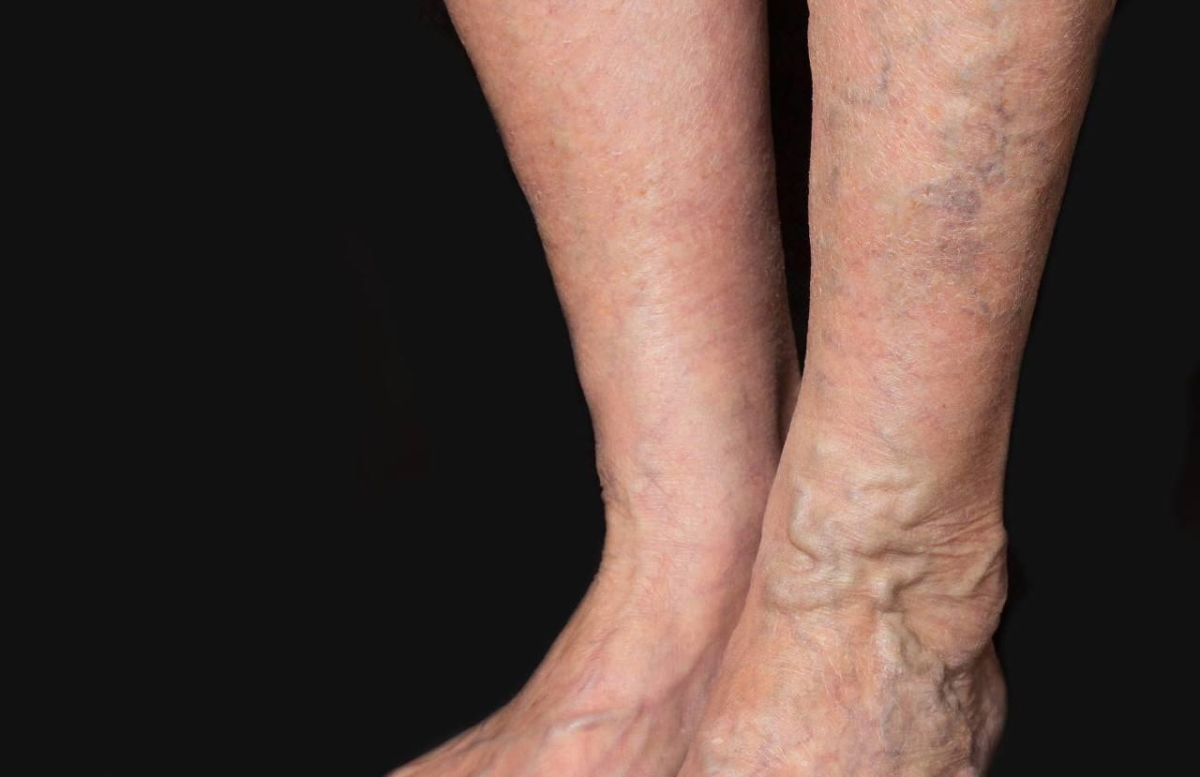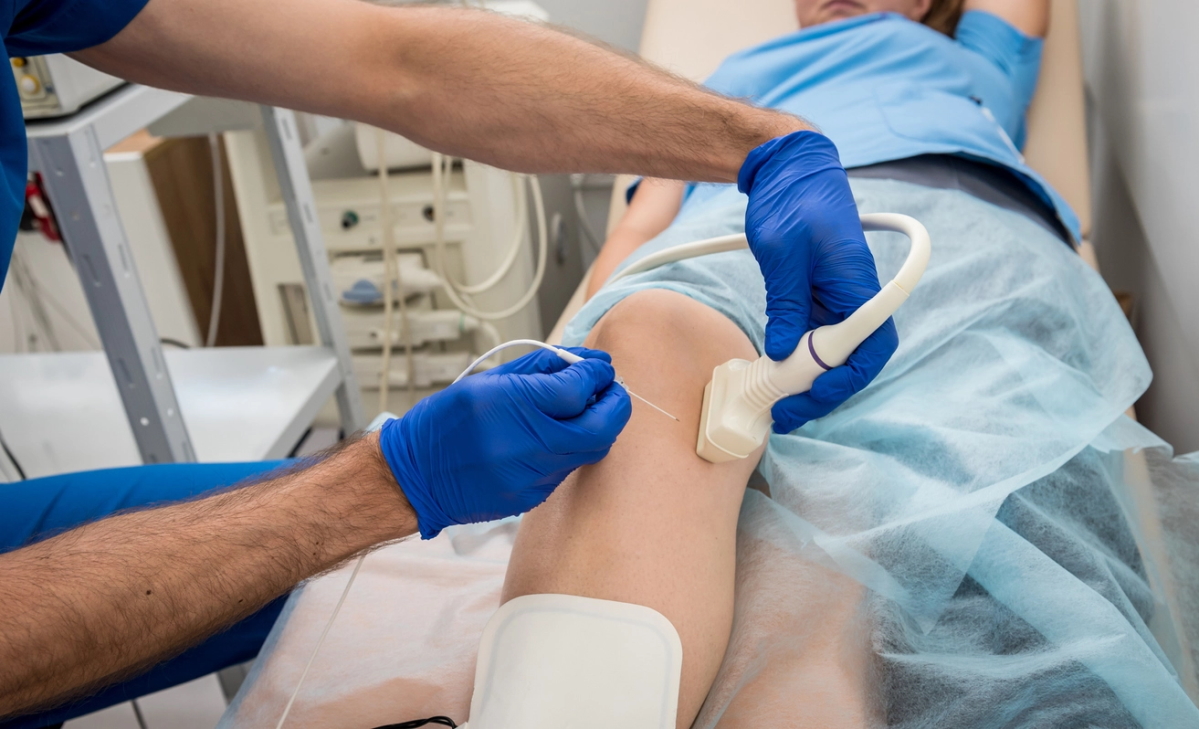It wasn’t that long ago when the best option for vein pain relief was a surgical procedure known as vein stripping. With this method, doctors treat varicose veins by physically stripping and removing the diseased vein. Sure, it helped women and men alike overcome symptoms such as achy or tired legs and intense pain that worsened after sitting or standing for too long. But with that relief also came lengthy recovery times and unsightly surgical scars, and many patients worried about complications and high recurrence rates. Thankfully, having to choose between undergoing an invasive surgery and suffering in silence is a thing of the past.
Modern medicine has advanced to where doctors can treat a diseased vein through nothing more than a small skin nick. Procedures are held in an outpatient setting under local anesthetic with no sedation. This means that recovery times have been practically reduced to nil, and many patients experience immediate relief from symptoms such as:
- Heaviness and achiness in the legs
- Swollen feet and ankles
- Throbbing pain and muscle cramps
- Numbness
- Bruising
- Varicose veins feel warm and tender to the touch
- Itching, dry, inflamed, or discolored skin
- Cramping
- Restless legs, particularly at night
The steps to improving your vein health often start by making physical activity more of a priority in your daily life. When you’re moving around, blood flow increases throughout your body and in the veins of your lower extremities. Conversely, inactivity limits blood flow through the veins and can lead to a variety of symptoms.
Are you looking for vein pain relief without the need for invasive surgical procedures? Request an appointment with Hamilton Vascular. Appointment
A Small Skin Nick — a Lifetime of Vein Pain Relief
Varicose veins affect roughly 25 million men and women in the United States. An average of one in every three adults over the age of 45 develops another form of vein disease. For some, varicose veins are nothing more than a cosmetic nightmare. For others, they can become incredibly painful as the veins continue to bulge, stretch, and enlarge. This is because they’ve become so narrow that they struggle to push blood from the legs back up to the heart. As this happens more often, blood flows in the wrong direction and begins to pool in the extremities.

As previously mentioned, achieving vein pain relief in the past and avoiding complications such as chronic venous insufficiency, deep vein thrombosis, phlebitis and thrombophlebitis, or skin and foot ulcers was typically through vein stripping. Patients would be placed under general anesthesia for roughly an hour to 90 minutes. Surgeons would make two or three incisions near the top, middle (groin), and bottom (calf or ankle) of the damaged vein. A thin wire was then inserted into the vein through the groin and the additional cut farther down the leg.
The wire would then be tied to the vein and pulled out through the lower cut. Naturally, the vein would come with it. While this all sounds nip and tuck, there are risks associated with vein stripping.
Below are a few of those vein stripping risks, as outlined by the U.S. National Library of Medicine.
- The patient can experience varicose veins over time.
- Excessive bleeding and potential blood clots
- Infection
- Negative reactions to medicines
- Breathing problems
- Possible nerve injury
- Bruising and scarring
With that said, vein stripping is generally safe and is still performed today. But more and more people are opting to avoid a potentially complicated surgery and instead go with more minimally invasive treatments. This is where interventional radiology comes into play. As a fast-growing medical specialty, interventional radiology offers alternatives to surgery using medical imaging guidance such as x-ray or ultrasound. Not only does this help your vein doctor perform more precise procedures, but they can do so through a nick of the skin no larger than a grain of rice.
No hospital admissions. No more incisions. No scarring. No issues with reoccurrence.
Searching for the best vein doctors in South Texas? Request a visit with Hamilton Vascular’s specialists in Austin, Houston, and San Antonio areas. Appointment
What Are My Treatment Options?
Successfully treating varicose veins disorders depends on an accurate and early diagnosis of the underlying issue, in addition to prescribing the right solution based on your condition. The goal of treatment is to relieve your symptoms, reduce risk of further complications, and improve leg appearance.
Sclerotherapy
Our board-certified vein specialists inject a specially formulated chemical solution full of sclerosing agents (either in liquid or foam form) into the affected veins through a small skin nick. This solution irritates the vein walls and causes the vein to collapse and disappear, safely and effectively helping you find vein pain relief.
Sclerotherapy only takes between 15 minutes to an hour. It is also versatile enough to treat mild to moderate varicose veins and improve the appearance of spider veins on the thighs, calves, and feet.
Microfoam Ablation
Microfoam ablation is very similar procedurally to sclerotherapy, but it is more beneficial for treating larger, tortuous (twisted) veins, veins above and below the knee, and even veins that were previously treated with other methods that were not as effective.
With this procedure, your specialist injects a special microfoam in your affected veins to relieve symptoms without the use of heat or tumescent. The foam fills the desired section of the vein, and the diseased vein collapses. Blood flow then shifts to healthier veins nearby.
Radiofrequency Ablation
A thin catheter is inserted into the diseased vein through a small needle stick, and under ultrasound guidance, the catheter is guided up into the great saphenous vein in the thigh or the small saphenous vein in the calf. The radiofrequency energy is delivered to the inside of the vein, heating and sealing the vein closed. Minor side effects include swelling, bruising, and tenderness around your treated area.
Radiofrequency ablation is a good option for patients who suffer from mild to moderate varicose veins and those who need relief from enlarged veins filled with blood.

It can be difficult to believe that vein pain relief can be achieved simply through a small skin nick, especially after so many years of having one primary procedure to turn to. Even today, many people think the only way to find relief is with complicated surgery and lengthy recovery times. But that couldn’t be further from the truth. The reality is that varicose vein treatment is often a minimally invasive approach, allowing patients to walk in and walk out.
Recent advances in image-guided technologies have led to the development of minimally invasive procedures like the ones above to achieve these goals, helping patients avoid surgery and hospital admittances.
Hamilton Vascular Wants to Help You Find Vein Pain Relief
Do you need help to treat varicose veins without complicated surgery? Are you worried that vein pain relief isn’t possible and that your symptoms could be a sign of more serious health conditions? Hamilton Vascular can help. Our expert doctors and caring staff utilize the latest technologies and minimally invasive procedures to help our patients with a variety of vein diseases. You can rest easy knowing that the vascular physicians at Hamilton are board-certified diagnostic radiologists with additional fellowship training in vascular and interventional radiology.
For a consultation with one of our expert vein doctors, please contact us at 866-552-4866 or complete the appointment form.
AppointmentHamilton Vascular serves the South Texas area including Houston, San Antonio, Austin, Round Rock, Bastrop, Brushy Creek, Cedar Park, Converse, Georgetown, Hutto, Kyle, League City, Leander, Marble Falls, New Braunfels, Pasadena, Pearland, Pflugerville, San Marcos, Schertz, Sugar Land, Katy, Clear Lake, Webster, The Woodlands, Universal City and more.
Prior to starting any new treatment or questions regarding a medical condition, always seek the advice of your doctor or other qualified health provider. This information is not a substitute for professional medical advice.

